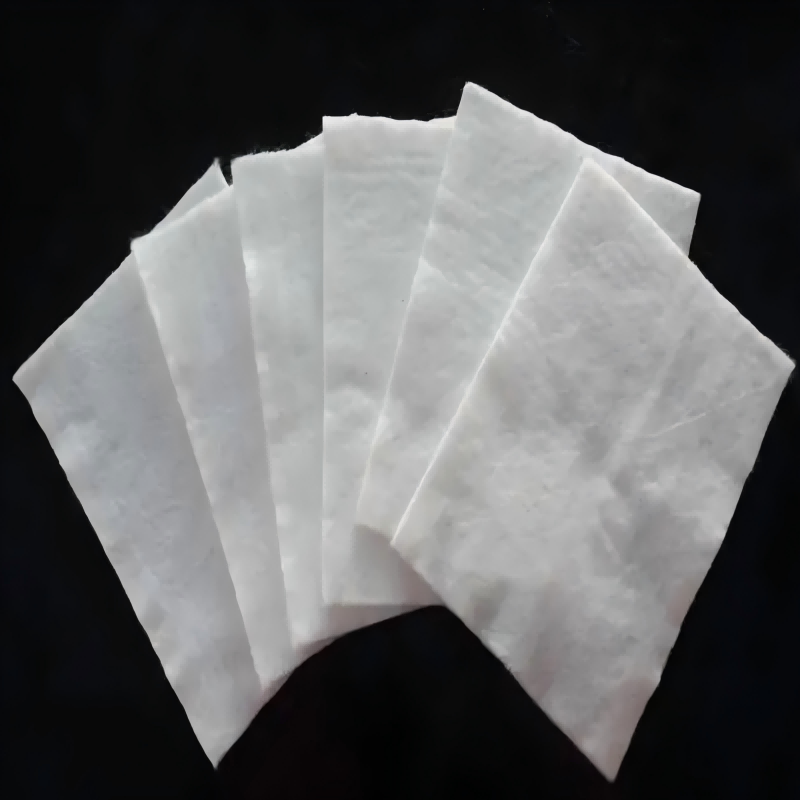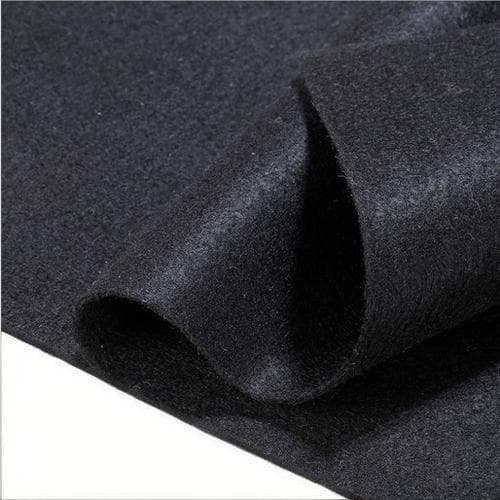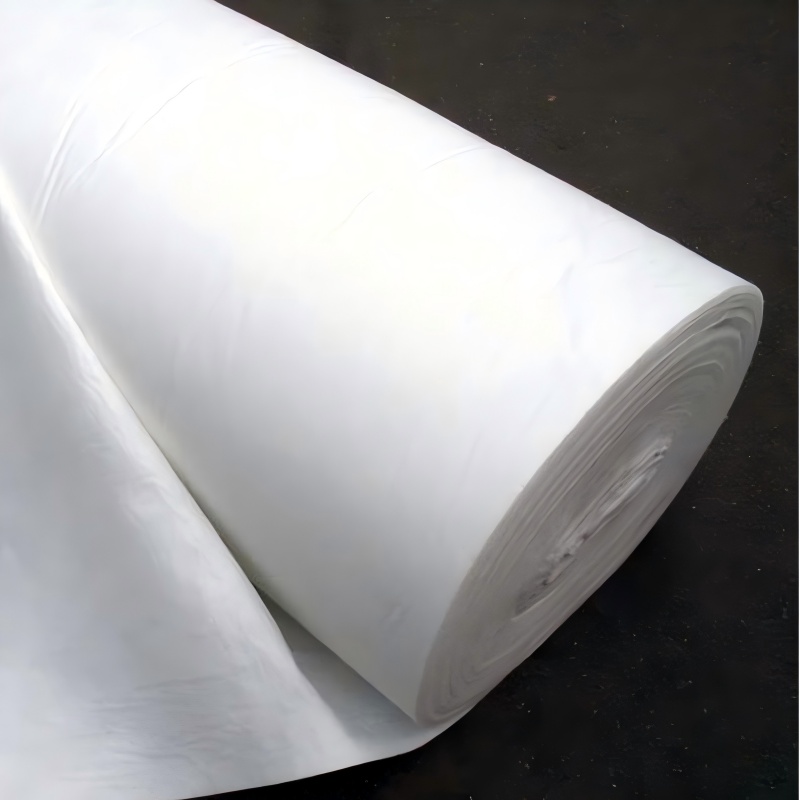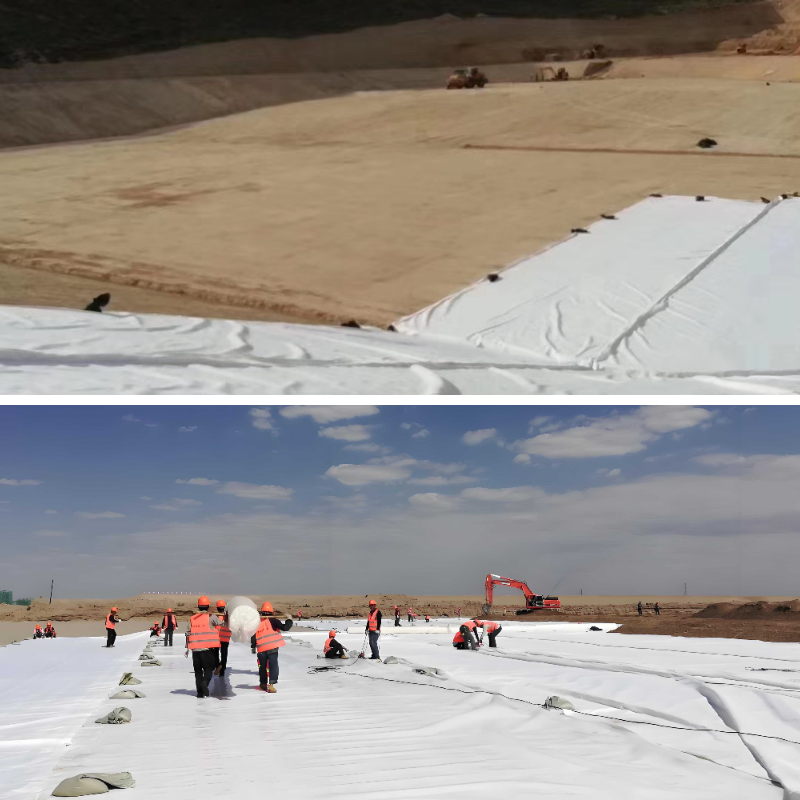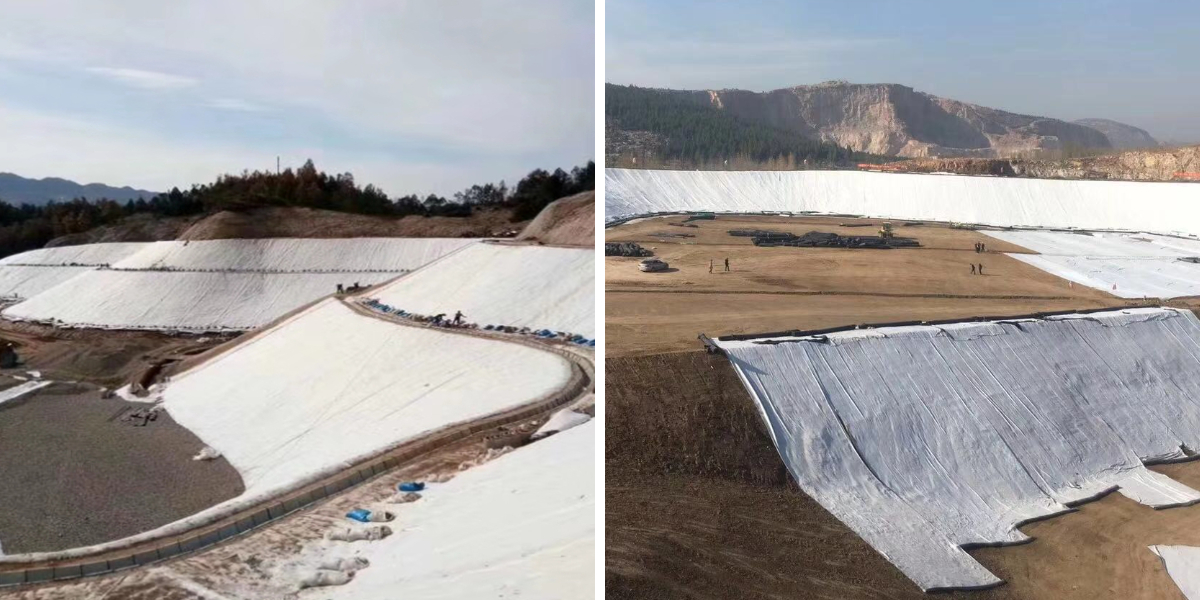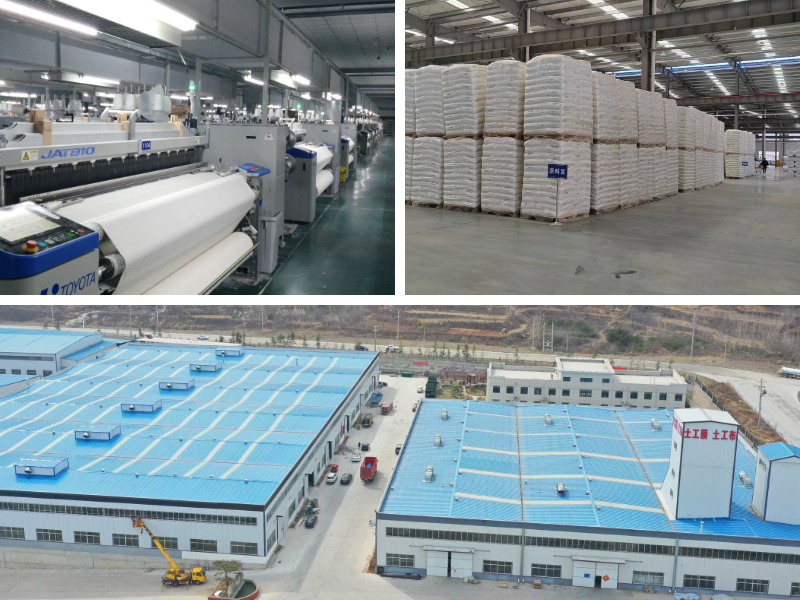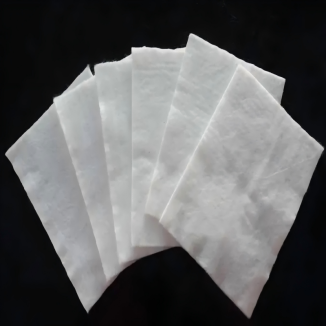Geotextile Paving Fabric
1. High strength and durability: high tensile strength, tear resistance, burst strength, corrosion resistance, resistance to microorganisms and insect infestations, long service life.
2. Permeability and Filtration: It has good permeability, allowing water to pass through while effectively preventing excessive loss of soil particles and soil erosion.
3. Easy construction and high efficiency: The finished product is a roll material, which is lightweight, easy to transport and lay, and can greatly shorten the construction period and reduce the construction intensity.
4. Uniform and stable performance: Industrial production, controllable quality, consistent performance, avoiding the unevenness of natural materials.
Product Introduction:
Geotextile Paving Fabric is a permeable geosynthetic material made from synthetic fibers (such as polypropylene, polyester, nylon, etc.) through processes such as needle punching or weaving.
It is essentially "cloth used in civil engineering", usually in the form of a roll, with a width of 1-6 meters and a length of tens to hundreds of meters. Its main function is not enhancement, but isolation, filtration, drainage, reinforcement (enhancement) and protection. It is used in combination with soil, rock or other geotechnical materials in engineering and is an indispensable foundation material in modern civil engineering.
Main features and performance
According to the manufacturing process, geotextiles are mainly divided into two categories, each with its own characteristics and emphasis:
1. Non woven geotextile (non-woven geotextile)
Manufacturing process: Short fibers or long fibers are strengthened through methods such as needle punching (the main method), thermal bonding, or chemical bonding after being opened, combed, and meshed.
Features:
Appearance: Cloth like, furry, isotropic (with similar performance in all directions).
Performance: It has good vertical permeability and flat drainage capacity, high elongation, excellent filtration and isolation performance.
Main functions: filtration, drainage, isolation, and protection.
2. Woven geotextile (woven geotextile)
Manufacturing process: Fiber yarns are interwoven through traditional weaving techniques such as plain weave and twill weave.
Features:
Appearance: Similar to traditional burlap or woven bags, with a clear structure.
Performance: Very high tensile strength, high modulus, low elongation, but uniform pores and high filtration accuracy.
Main functions: reinforcement (enhancement), isolation, and protection. Its filtering ability is reflected in the precise control of particle retention.
Product Parameters:
project | metric | ||||||||||
Nominal strength/(kN/m) | |||||||||||
6 | 9 | 12 | 18 | 24 | 30 | 36 | 48 | 54 | |||
1 | Longitudinal and transverse tensile strength / (kN/m) ≥ | 6 | 9 | 12 | 18 | 24 | 30 | 36 | 48 | 54 | |
2 | Maximum elongation at maximum load in longitudinal and transverse directions/% | 30~80 | |||||||||
3 | CBR top penetration strength /kN ≥ | 0.9 | 1.6 | 1.9 | 2.9 | 3.9 | 5.3 | 6.4 | 7.9 | 8.5 | |
4 | Longitudinal and transverse tearing strength /kN | 0.15 | 0.22 | 0.29 | 0.43 | 0.57 | 0.71 | 0.83 | 1.1 | 1.25 | |
5 | Equivalent aperture O.90(O95)/mm | 0.05~0.30 | |||||||||
6 | Vertical permeability coefficient/(cm/s) | K× (10-¹~10-), where K=1.0~9.9 | |||||||||
7 | Width deviation rate /% ≥ | -0.5 | |||||||||
8 | Unit area mass deviation rate /% ≥ | -5 | |||||||||
9 | Thickness deviation rate /% ≥ | -10 | |||||||||
10 | Thickness coefficient of variation (CV)/% ≤ | 10 | |||||||||
11 | Dynamic perforation | Puncture hole diameter/mm ≤ | 37 | 33 | 27 | 20 | 17 | 14 | 11 | 9 | 7 |
12 | Longitudinal and transverse fracture strength (grab method)/kN ≥ | 0.3 | 0.5 | 0.7 | 1.1 | 1.4 | 1.9 | 2.4 | 3 | 3.5 | |
13 | Ultraviolet resistance (Xenon arc lamp method) | Longitudinal and transverse strength retention rate% ≥ | 70 | ||||||||
14 | Ultraviolet resistance (fluorescence UV lamp method) | Longitudinal and transverse strength retention rate% ≥ | 80 | ||||||||
Product Applications:
1. Highway and railway subgrade engineering
Isolation: Installed between the roadbed and foundation soil to prevent soft soil from rising and gravel from sinking, and to maintain the thickness and bearing capacity of the structural layer.
Reinforcement: Utilizing its tensile strength to disperse loads and improve soil stability.
2. Water conservancy engineering (dams, rivers, coasts)
Anti filter layer: used for slope protection and retaining walls behind earth rock dams, riverbanks, and seawalls to prevent soil from being washed away by water flow, while allowing water to freely discharge and reducing pore water pressure.
Protection: As an anti erosion layer, it protects the bank slope from erosion by water flow and waves.
3. Landfills and Environmental Protection Projects
Isolation and protection: As a component of the basic lining system and covering system of the landfill site, it is used in conjunction with the geomembrane to not only protect the geomembrane from being punctured, but also play a role in drainage and air conduction.
Filtration: Used as a filtration layer in the leachate collection system.
4. Municipal and Construction Engineering
Drainage: Used for the drainage system of building basements, rooftop gardens, underground drainage ditches, and other areas.
Isolation: Used for foundations, squares, parking lots, etc. to prevent mixing of different materials.
5. Other applications
Tunnel engineering: used for drainage and waterproofing behind the lining.
Agriculture: Used for anti-seepage and filtration of reservoirs and irrigation channels.
Geological hazard prevention and control: used for reinforcing landslide bodies, treating slopes, etc.
In summary, geotextile, as a multifunctional new type of geotechnical engineering material, effectively solves many problems in traditional engineering through its core functions of isolation, filtration, drainage, reinforcement, and protection, improves engineering quality, reduces costs, and promotes sustainable development of the environment.


